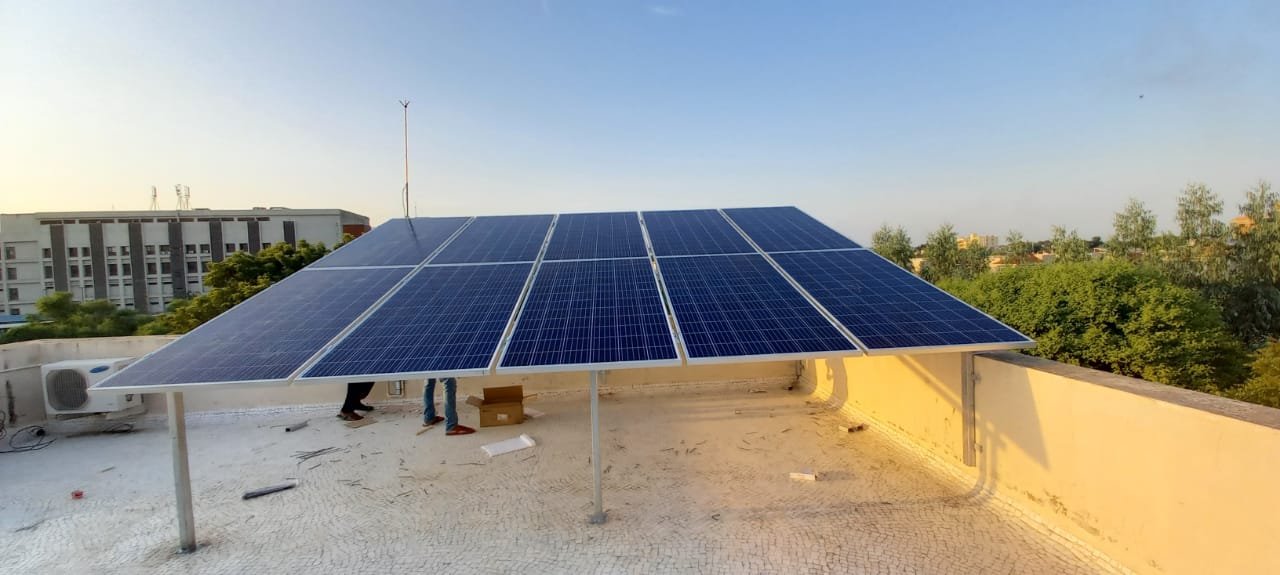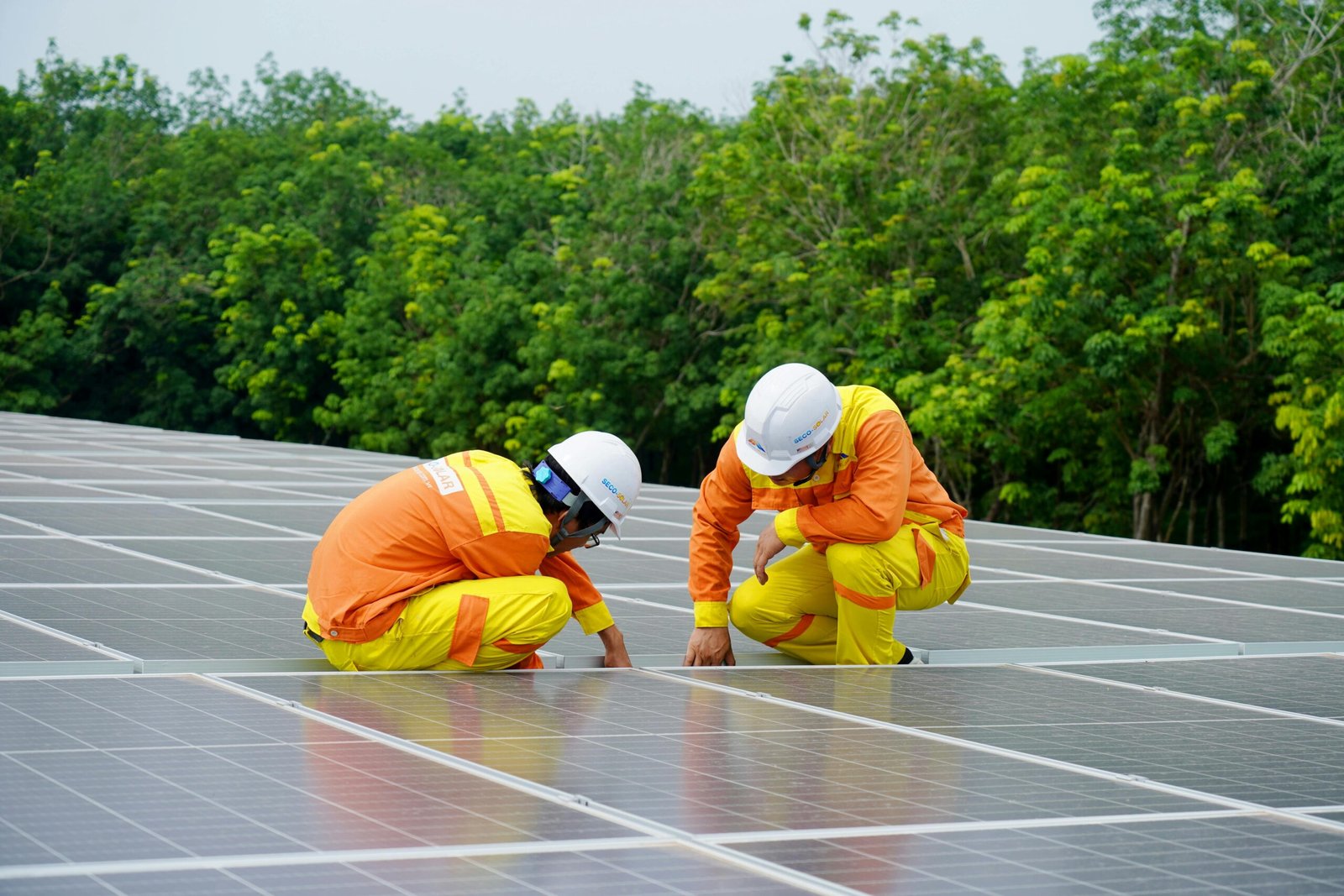As the world moves towards renewable energy solutions, residential solar panels have become an increasingly popular choice for homeowners looking to reduce energy costs, lower their carbon footprint, and contribute to a sustainable future. Solar power harnesses the energy from the sun, converting it into usable electricity that can power everything from lights to appliances in your home. This comprehensive guide will cover everything you need to know about residential solar panels, their benefits, installation process, maintenance, and more.
Table of Contents
What is a Residential Solar Panel?
A residential solar panel is a device designed to convert sunlight into electricity for use in a home. These panels are typically installed on rooftops and are composed of multiple photovoltaic (PV) cells made from semiconductor materials like silicon. When sunlight strikes these cells, it excites electrons, creating an electric current through a process known as the photovoltaic effect.
The electricity generated by the solar panels is in the form of direct current (DC). Since most household appliances operate on alternating current (AC), an inverter is used to convert the DC electricity into AC, making it suitable for home use.
Residential solar panels offer several benefits, including reducing electricity bills, decreasing reliance on non-renewable energy sources, and lowering greenhouse gas emissions. However, their effectiveness depends on factors such as geographic location, roof orientation, and local climate conditions. In regions with abundant sunlight, like Ahmedabad, Gujarat, installing solar panels can be particularly advantageous.
In recent years, there has been a significant increase in the adoption of residential solar panels worldwide. For instance, as of 2022, around 25 million households rely on rooftop solar power globally, with expectations to exceed 100 million by 2030.
How Do Residential Solar Panels Work?
Residential solar panels work by harnessing sunlight and converting it into electrical energy through photovoltaic cells. The process involves several key components:

- Distributed Energy Resource: Any source of power that is owned by the customer. For homeowners, the most popular source is solar panels.
- Inverter: Solar panels, the most common type of distributed energy resource, generate Direct Current (DC) power, while home appliances use Alternating Current (AC) power. An inverter converts DC power to usable AC power, and provides some limited protections for abnormal operating conditions.
- Generation Meter: Measures how much energy your equipment generates. This meter is sometimes called a “production meter” and it operates separately from your existing electric meter. This is usually provided by the solar panel installer.
- AC Disconnect Switch: Safely isolates your equipment from our grid. This must be accessible and lockable by our crews at all times.
- Breaker Box: Allows you to shut off power to different sections of your home (or all of your home if desired).
- Advanced Electric Meter: This is a smart meter we install at your home. It measures how much energy you use when your solar panels aren’t generating enough to support your needs. It also measures the surplus energy your solar panels send back to the electric grid when they produce more than you use.
Benefits of Residential Solar Panels
1. Lower Energy Bills
One of the most significant benefits of installing residential solar panels is the potential for significant savings on your monthly energy bills. By generating your own electricity, you can reduce your reliance on your utility provider and the cost of purchasing electricity from the grid.
2. Environmental Benefits
Solar energy is a clean, renewable resource that reduces reliance on fossil fuels. By installing solar panels, homeowners contribute to lowering greenhouse gas emissions and promoting environmental sustainability.
3. Increased Property Value
Homes equipped with solar panels are often seen as more desirable by buyers. Studies have shown that homes with solar energy systems tend to sell faster and at higher prices compared to homes without solar power systems.
4. Energy Independence
With a solar panel system, homeowners can reduce their dependency on fossil fuels and the grid. This is especially beneficial in areas where energy costs are high or the grid is unreliable.
5. Government Incentives and Tax Credits
Many governments offer tax incentives, rebates, and subsidies for homeowners who install residential solar panels. These incentives can significantly reduce the upfront cost of installation, making solar energy more accessible.
6. Low Maintenance Costs
Solar panel systems generally require minimal maintenance. With occasional cleaning and inspections, solar panels can last for 25-30 years or more. Most manufacturers also offer warranties for their products, giving homeowners peace of mind.
7. Adaptability to Various Climates
Solar panels are effective in diverse climatic conditions and can generate electricity even on cloudy days, making them a versatile energy solution across different regions.

Types of Residential Solar Panels
When considering installing solar panels, it’s essential to understand the different types available:
1. Monocrystalline Solar Panels
Monocrystalline panels are crafted from single-crystal silicon, resulting in a uniform black appearance. They are renowned for their high efficiency and longevity, often exceeding 25 years. Due to their superior performance, they tend to be more expensive than other types. These panels are ideal for homeowners with limited roof space seeking maximum energy output.
2. Polycrystalline Solar Panels
Constructed from multiple silicon crystals, polycrystalline panels exhibit a blue hue. They offer a balance between cost and efficiency, making them a popular choice for residential solar panels installations. While slightly less efficient than monocrystalline panels, they are more budget-friendly and suitable for homes with ample roof space.
3. Thin-Film Solar Panels
Thin-film panels are produced by depositing photovoltaic material onto a substrate, resulting in a lightweight and flexible product. They are less efficient compared to crystalline-based panels and have a shorter lifespan. However, their flexibility allows for diverse applications, including integration into building materials like solar shingles.
4. PERC Solar Panels (Passivated Emitter and Rear Cell)
Passivated Emitter and Rear Cell (PERC) panels are an advancement in monocrystalline cell technology. They include an additional layer on the back of the cells, enhancing efficiency by reflecting unabsorbed light back into the cell for a second absorption attempt. PERC panels are gaining popularity due to their improved performance and are suitable for residential installations aiming for higher energy yields.
5. Bifacial Solar Panels
Bifacial panels can capture sunlight on both their front and rear sides, increasing energy production. They are typically made from monocrystalline cells and are most effective in installations where reflected sunlight is abundant, such as over light-colored surfaces or in snowy regions. While more common in commercial settings, they are becoming an option for residential use where conditions are favorable.
6. Building-Integrated Photovoltaics (BIPV)
BIPV systems integrate solar cells directly into building materials, such as facades, windows, or roofs. This approach offers a seamless aesthetic and can be a cost-effective solution by serving dual purposes—acting as both a building material and an energy generator. BIPV is suitable for new constructions or major renovations where design integration is a priority.

How to Install Residential Solar Panels
The installation of residential solar panels involves several key steps:
- Site Assessment: The first step is to have a professional solar provider assess your home’s roof to ensure it is suitable for solar installation. Factors such as roof orientation, shading, and structural integrity will be considered.
- System Design: Based on the assessment, a solar system will be designed to meet your energy needs. This includes determining the number of panels required, the inverter size, and whether energy storage is needed.
- Permitting and Approval: Before installation can begin, necessary permits must be obtained from local authorities. The solar company will typically handle the permitting process.
- Panel Installation: Once the permits are in place, the installation of the solar panels begins. This usually involves mounting the panels on your roof and wiring them to the inverter and electrical panel.
- System Activation: After installation, the system is tested to ensure everything is working properly. Once activated, your solar panels will start generating electricity.
Costs of Residential Solar Panels
| System Size | Estimated Cost (INR) |
|---|---|
| 1 kW | ₹65,000 – ₹85,000 |
| 2 kW | ₹1,05,000 – ₹1,25,000 |
| 3 kW | ₹1,50,000 – ₹1,70,000 |
| 5 kW | ₹2,30,000 – ₹2,50,000 |
| 10 kW | ₹4,50,000 – ₹4,60,000 |
Cost Components:
- Solar Panels: The primary component, with costs varying based on type and efficiency.
- Inverters: Convert DC to AC; prices depend on type and capacity.
- Mounting Structures: Costs vary based on installation type and complexity.
- Batteries (Optional): Add to the cost if included for storage.
- Installation Charges: Cover labor and associated expenses.
The Indian government offers subsidies to promote rooftop solar installations. Under the Pradhan Mantri Surya Ghar Muft Bijli Yojana, eligible households can receive financial assistance, reducing the overall installation cost. For instance, subsidies can cover 20% to 70% of the total cost, depending on the region and the specific scheme.
Solar Panel Maintenance for Homes
One of the significant advantages of solar panels is their low maintenance requirements. To keep your solar system running efficiently, regular cleaning and occasional maintenance checks are all that’s needed.
- Cleaning: Dust, debris, and leaves can accumulate on your solar panels, reducing their efficiency. Cleaning the panels with water and a soft brush or using professional cleaning services can help maintain optimal performance.
- Inspection: Periodic inspections are essential to check for any damage, such as loose wiring or cracked panels. Solar panel systems are built to last, but regular checks ensure that potential issues are caught early.
- Monitoring: Many solar systems come with monitoring software that allows homeowners to track energy production in real time. Monitoring helps ensure that the system is working efficiently and can alert homeowners to any problems.
Conclusion
Residential solar panels are a smart investment for homeowners looking to save money, increase energy independence, and reduce their environmental impact. With advancements in solar technology, a variety of panel options, and government incentives, solar power is more accessible than ever. Whether you’re interested in lowering your energy bills or contributing to a greener planet, installing residential solar panels is a powerful step toward a sustainable future.
By carefully assessing your home’s needs, choosing the right solar system, and working with a trusted installer, you can enjoy the numerous benefits of solar energy while making a positive impact on the environment. Are you ready to explore the potential of residential solar panels for your home? Contact Soleos Solar Energy today to learn more about how we can help you make the switch to clean, renewable energy.
